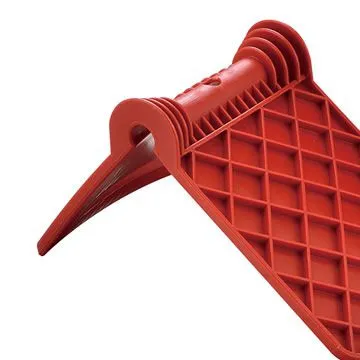Nov . 10, 2024 05:13 Back to list
Guide to Installing T-Bar Ceiling Grid System for Your Home
How to Install a T-Bar Ceiling Grid
Installing a T-bar ceiling grid can transform an ordinary ceiling into a modern, attractive space that conceals wiring, ductwork, and other unsightly utilities. Whether you're remodeling an office or creating a new space in your home, a T-bar ceiling grid is a relatively simple and cost-effective solution. Follow this guide to ensure a smooth installation process.
Materials and Tools Needed
Before you begin, gather the necessary materials and tools 1. Materials - T-bar ceiling grid system (main beams, cross tees, and perimeter channels) - Ceiling tiles (ensure they fit the grid) - Suspension wires - Hangers and anchors - Wall angle brackets (for perimeter) - Fasteners (screws and anchors)
2. Tools - Measuring tape - Level - Utility knife - Drill and drill bits - Wire cutters - Ladder - Safety goggles
Step-by-Step Installation Process
Step 1 Plan the Layout
Start by measuring the room to determine how many tiles you will need and where the main beams will be located. Typically, T-bar grids are spaced 4 feet apart, but you can adjust this based on your design. Use a chalk line to mark where the grid will hang on the walls, ensuring you account for any fixtures or vents.
Step 2 Install Perimeter Channels
Using your wall markings as a guide, attach the wall angle brackets along the perimeter of the room. Ensure these are level, as they will dictate the height of your entire grid. Use screws and anchors appropriate for your wall type (drywall, concrete, etc.). The bottom edge of the bracket should be flush with the line you drew, allowing your ceiling tiles to sit evenly.
Step 3 Install Main Beams
how to install t-bar ceiling grid

Next, you will hang the main beams from the structure above using the suspension wires. Start by determining the locations of the main beams, which usually run the longer dimension of the room. Use the drill to insert anchors into the ceiling, and then attach the suspension wires to hang down at appropriate intervals (typically every 4 feet). Once suspended, lay the main beams into the brackets, ensuring they fit snugly.
Step 4 Install Cross Tees
Once your main beams are secure, it’s time to add the cross tees. These should fit perpendicular to the main beams and divide the grid into equal sections, allowing space for your tiles. Ensure each cross tee is pushed firmly into place, as they help provide stability.
Step 5 Adjust for Height
If you're using a drop ceiling, make sure each element of the grid sits at the correct height to allow for proper tile installation. Adjust the suspension wires accordingly to ensure the grid remains level throughout the area.
Step 6 Insert Ceiling Tiles
With the T-bar grid installed, it's time to add the ceiling tiles. Start in one corner and lay the tiles into the grid. Ensure they fit snugly without any gaps. If your ceiling has lights or other fixtures, take care to cut the tiles as needed to fit around them. A utility knife should work effectively for minor adjustments.
Step 7 Final Check and Clean Up
Once all tiles are in place, take a moment to inspect the ceiling. Ensure everything is level and secure, and that all tiles fit well. After cleaning up the workspace, you can add any finishing touches, such as trim or painting.
Conclusion
Installing a T-bar ceiling grid can be a rewarding DIY project that enhances the look of your space while also covering utilities. By carefully planning and following these steps, you can achieve a professional-looking ceiling in no time. Remember to take your time and ensure safety precautions throughout the installation process. Enjoy your transformed space!
-
Quality Ceiling Trap Doors & Access Panels | Easy & Secure AccessNewsAug.30,2025
-
Durable Ceiling T Grid Systems | Easy InstallationNewsAug.29,2025
-
PVC Gypsum Ceiling: Durable, Laminated Tiles for Modern SpacesNewsAug.28,2025
-
Pvc Gypsum Ceiling Is DurableNewsAug.21,2025
-
Mineral Fiber Board Is DurableNewsAug.21,2025
-
Ceiling Tile Clip Reusable DesignNewsAug.21,2025







